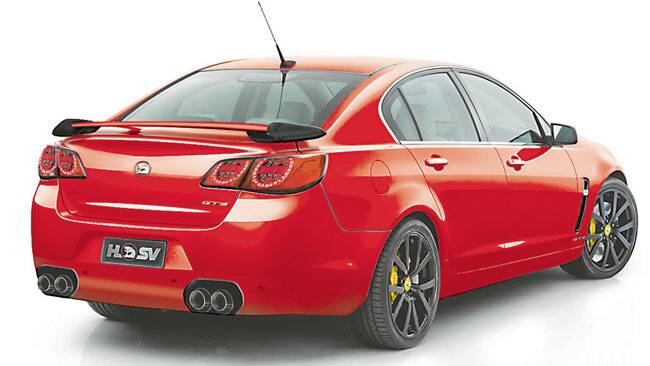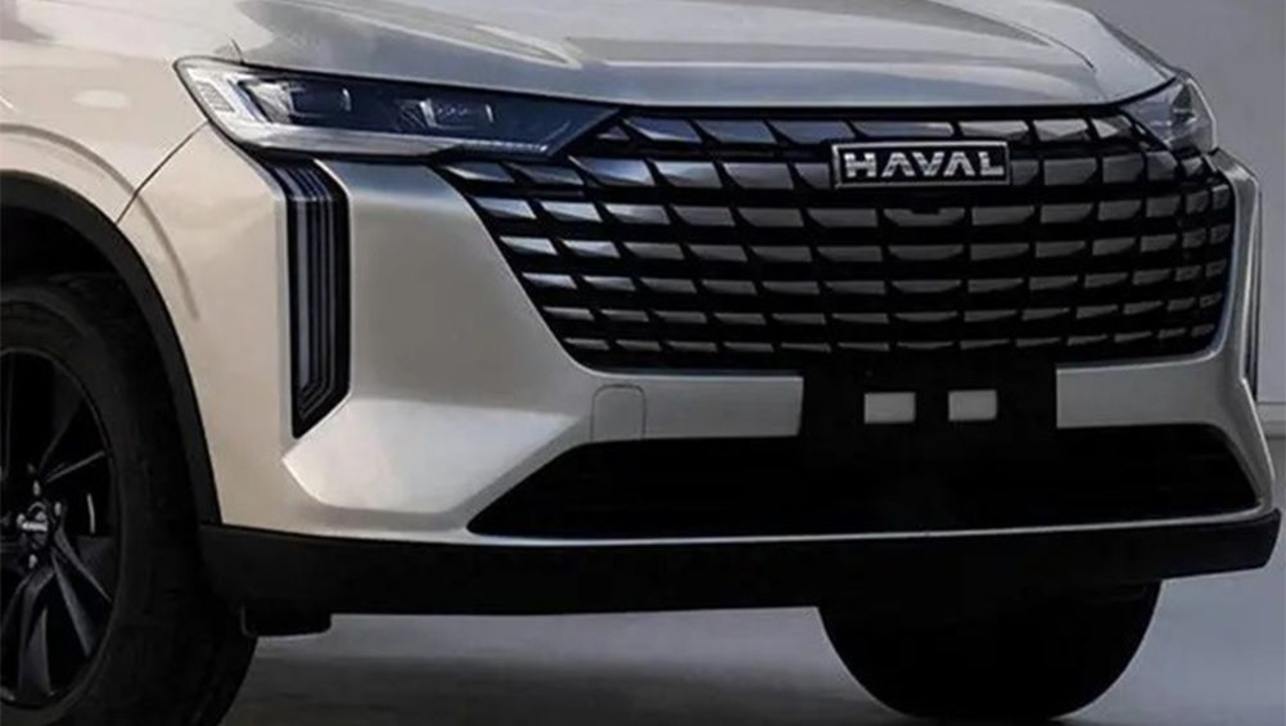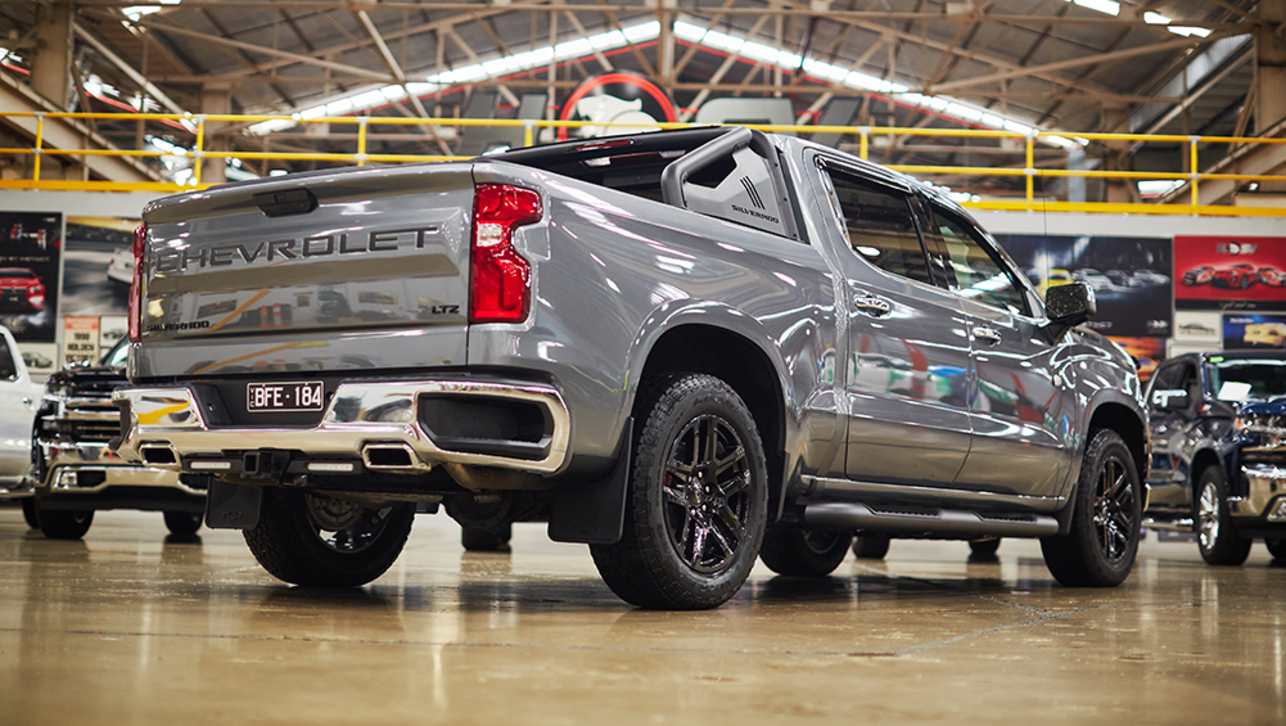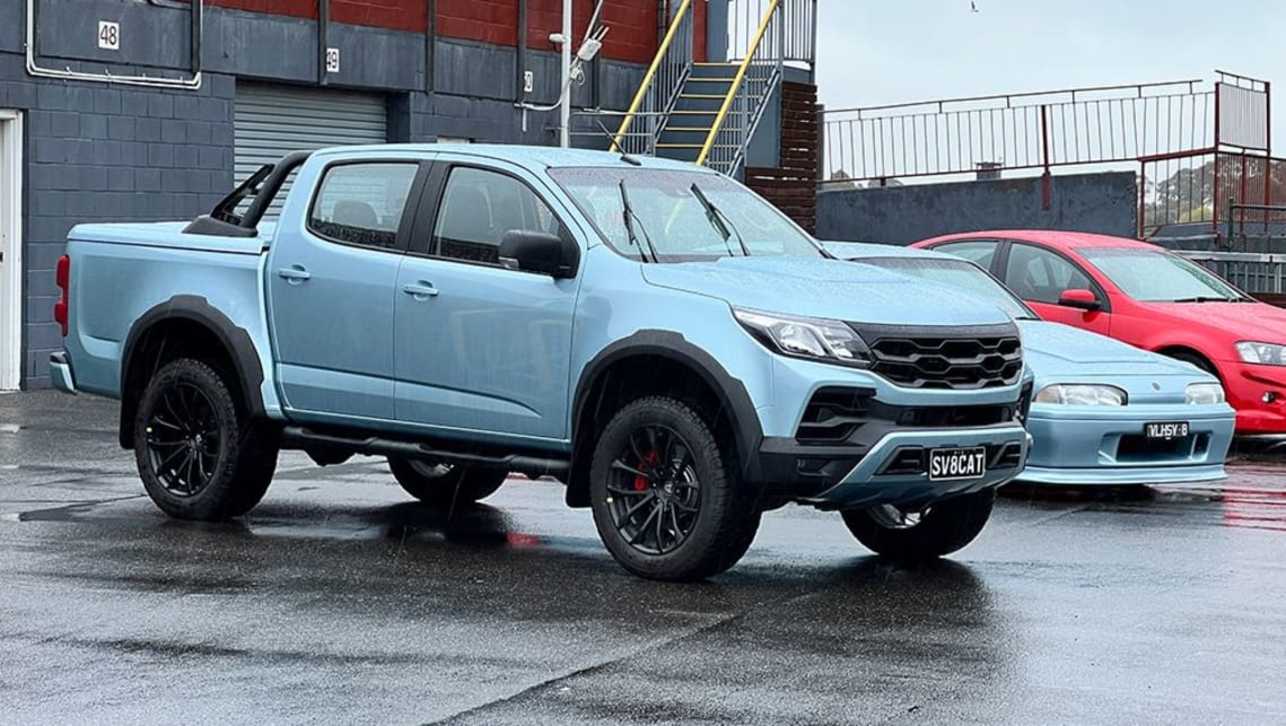Today Carsguide can exclusively lay bare classified information on what will be the fastest and most powerful car Australia has ever produced -- and likely ever will produce -- the new HSV GTS “Gen F”.
Given the uncertain future of local manufacturing, and an imminent switch to four-cylinder economy cars, the new HSV GTS is poised to become the Australian automotive equivalent of the iconic racehorse Black Caviar.
The new generation Holden Special Vehicles GTS will be powered by a 6.2-litre supercharged V8 borrowed from a race-bred Chevrolet Camaro, known as the “LSA”.
Its epic 430kW of power and 740Nm of torque eclipses that of any car previously made in Australia, and has more grunt than the world’s fastest sedans currently on sale in Australia (see table below). Only the new Mercedes E63 which goes on sale locally later this year will match its kilowatt output.
In imperial measurements the new HSV GTS “Gen F” has 575 horsepower, only 25hp less than a 2012 V8 Supercar. Performance times are yet to be announced but the new HSV GTS is said to accelerate quicker than most Porsches, reaching 0 to 100km/h in “comfortably less” than 4.5 seconds, which also happens to be the unofficial time for the latest supercharged Ford Falcon GT.
While most of the HSV’s European peers can top 300km/h on an autobahn, the GTS has been electronically speed-limited to 250km/h, to meet General Motors’ global guidelines but still enable enthusiast drivers to explore its potential on a race track.
To tame its mammoth grunt the HSV GTS “Gen F” will be fitted with performance technology never seen before on a locally-made car, some of it inspired by Porsche. Electronic “torque vectoring” brings new levels of driver control by apportioning power to the outside wheel when accelerating out of corners.
The stability control system on the new GTS will have five settings (up from the current three) that will also adjust steering and suspension feel at the press of a button, from “comfort” to “track” mode.
The shock absorbers use the same technology as Ferrari, with tiny magnetic particles adjusting the damping forces in milliseconds, enabling the car to better respond to road conditions.
New Continental tyres, which end HSV’s 20-year relationship with Bridgestone, were initially developed for Mercedes-Benz and are said to have achieved an amazing double-act: more grip and longer wear.
Given the raft of new technology and hardware upgrades required to handle the extra power, the new HSV GTS won’t come cheap. It is the second-dearest car to wear a HSV badge since the limited edition HSV W427 V8 sold for $155,500 in 2009.
The new HSV GTS is due on sale mid-year with an RRP of about $95,000 -- but the transaction price will be closer to $100,000 once on-road costs are added. That’s almost triple the cost of a basic Holden Commodore, but less than half as much as its European rivals.
As our computer-illustrated images show HSV has taken a much more conservative approach to the design of the new model. It is unclear whether fans will embrace the change, having grown accustomed to greater visual differentiation between HSVs and Holdens over the past seven years.
The new HSV “Gen F” lacks the twin bonnet vents, the large trapezoidal exhaust tips, the repositioned tail-lights and the prominent blacked-out nose treatments which were signatures of the current line-up. Even the front fender garnishes are the same as those found on the regular VF Commodore, albeit with different finishes (black instead of chrome).
Unusually, HSV will not highlight the GTS output by displaying its power number on the bootlid, as it has done with its flagship model for the past 25 years. Instead of the numbers “430”, the bootlid badge will simply say “LSA”, the code for the Camaro-sourced engine.
HSV has fitted LED tail-lights that are different from those fitted to the standard Commodore, but they occupy the same space -- unlike the bespoke tail-lights on HSV’s VE range which looked dramatically different from the Commodore and were mounted lower. It is understood that it would have been too costly to make changes to the aluminium bootlid.
While there has been widespread speculation about what might power the new HSV range -- given the Commodore’s link to the US Camaro’s underpinnings and its engines -- no-one has to date published more than guesswork.
Contrary to perception, fitting the LSA engine in the Commodore was not a straightforward process. While the supercharged V8 engine was readily available off the shelf, significant upgrades were required to the clutch, gearbox, tailshaft and axles to handle the awesome power. A new heavy-duty differential with extra cooling and extra mounting points had to be developed, as did extra under-body strengthening.
HSV first secretly fitted an LSA engine to a test mule about four years ago, but it was by no means a guarantee that HSV would get the go ahead to build and sell the finished product. HSV had to pass stringent engineering protocols put in place by General Motors head office in Detroit. Having passed all the reliability and durability requirements during the development of the GTS, HSV finally got the green light about 18 months ago.
As with most HSVs built over the past 25 years, the new GTS is built to a partially-complete form alongside regular Commodore models on the Holden production line at Elizabeth near Adelaide. It is then transported to HSV's final assembly area in Clayton near Melbourne, where the performance brakes, tyres, suspension and unique bodywork is fitted.
The 6.2-litre supercharged V8 is fitted on the production line in Adelaide. HSV's previous horsepower hero, the W427 built in 2008 and 2009, had its engine fitted at its Clayton facility. This makes the LSA the most powerful engine to ever be fitted to a car on the Holden production line.
HSV considered offering a detuned version of the LSA engine in a special edition Clubsport, but this was ruled out because of the high cost of the engine, and the extra cost involved in recalibrating a lower power output.
In the end the company decided to keep the LSA exclusive to the GTS where HSV has the best chance of recouping the vehicle’s considerable development cost. Carsguide also understands there will be no further power upgrades to the LSA engine during its four-year run to the end of 2016, when the VF Commodore will bow out to make way for a locally-made four-cylinder front-drive sedan.
The end of rear-drive Commodores is likely to ensure the HSV GTS “Gen F” will become a future collector’s item, given that it is unlikely any locally-made car produced after it will eclipse its power output.
The new HSV GTS “Gen F” was so secret only an inner-circle of senior Holden executives were allowed in the planning meetings over the past four years. The HSV performance car outfit -- a separate business to Holden -- also took unprecedented security measures. Most of its own staff didn’t know it was coming.
Only the designers and engineers who developed the GTS had intimate knowledge of the LSA supercharged V8 engine that would power it. Early HSV prototypes were assembled by hand so they didn’t go along the regular Holden production line. Only in the past few months were a handful of pre-production cars sent down the assembly line in Elizabeth.
But with the unveiling of the new HSV range just around the corner, News Limited has exclusively obtained key data on the most exciting car to ever wear a made-in-Australia stamp.
HSV was able to keep the epic supercharged GTS engine under wraps because it is continuing with the Corvette-based 6.2-litre V8 for the rest of its model line-up, including the Clubsport, Senator and Grange sedans and the Maloo ute.
There will be three engine outputs available from the regular 6.2-litre V8 -- 317kW, 325kW and a new 340kW/570Nm option which achieves its new peak thanks to a high-performance air intake. The 340kW “Performance Pack” will be a $6000 option (paired with unique wheels and other equipment) on the Clubsport R8 sedan and wagon and the Maloo R8 ute, but standard on the Senator and Grange luxury sedans.
Meanwhile 20-inch rims will be standard across the range (HSV didn’t see the need for bigger wheels). The charcoal-finish, multi-spoke, lightweight, forged-alloy 20-inch wheels first seen on last year’s 25th anniversary GTS will become an option across the “Gen F” range.
Six-piston brakes -- with lighter calipers and two-piece rotors for improved cooling -- will be standard on the GTS, but the rest of the range will retain four-piston brakes. Some models have trimmed about 30kg in weight but the GTS weighs about the same as before because of the added heavy-duty hardware.
When News Limited asked HSV to comment on the new line-up the company chose to maintain its silence, saying it doesn’t comment on future model plans.
Even top-level HSV dealers were only just informed about the new model in the past few weeks. They too can’t believe HSV has been able to keep such big news so secret for so long. Thankfully, we’ve been able to piece together this story with their help, more than a month ahead of the official unveiling.
Unfortunately, enthusiasts will need to wait a little longer yet for the mighty GTS. HSV will launch its new Clubsport and Maloo line-up in June but the GTS is not due to start production until August.
Although it is HSV’s intention to maintain the GTS as a regular part of the model range, production will initially be limited, with only about 500 LSAs due to be built in this year’s allocation.
This reporter is on Twitter: @JoshuaDowling
HSV GTS “GEN F”
Price: $95,000 plus on-roads (approx)
Engine: Supercharged 6.2-litre V8
Power: 430kW and 740Nm
Transmission: Six-speed manual and six-speed automatic
0 to 100km/h: Less than 4.5 seconds
GTS technology highlights: Twin-plate clutch, heavy-duty limited-slip differential with extra cooling, five-stage stability control (also adjusts steering and suspension feel). Two-piece brake rotors, lighter brake calipers (six-piston front, four-piston rear on GTS, four-piston front and rear on the rest of the range). Foglights make way for extra cooling and an engine air intake. The weight-saving from the Commodore’s aluminium bonnet, boot and other parts has been offset by the extra weight of the GTS model’s heavy-duty performance equipment, so it weighs about the same as before.
RIVALS
BMW M5
Price: from $229,500
Engine: Twin turbo 4.4-litre V8
Power: 412kW and 680Nm
Transmission: Seven-speed twin-clutch auto
0 to 100km/h: 4.3 seconds
Mercedes-Benz E63
Price: $240,485
Engine: 5.5-litre twin turbo V8
Power: 386kW and 700Nm (upgraded to 430kW/800Nm later this year)
Transmission: Seven-speed twin-clutch auto
0 to 100km/h: 4.3 seconds
Porsche Panamera Turbo
Price: $382,400
Engine: 4.8-litre twin turbo V8
Power: 382kW and 700Nm
Transmission: Seven-speed twin-clutch auto
0 to 100km/h: 4.1 seconds
Jaguar XF-R
Price: $189,900
Engine: Supercharged 5.0-litre V8
Power: 375kW and 625Nm
Transmission: Eight-speed automatic
0 to 100km/h: 4.9 seconds
Ford Falcon GT
Price: $70,790
Engine: Supercharged 5.0-litre V8
Power: 335kW and 570Nm
Transmission: Six-speed manual or six-speed auto
0 to 100km/h: 4.5 seconds
Ford Falcon GTHO Phase III (1971)
Price: $5250
Engine: 5.8-litre V8
Power: 280kW and 513Nm
Transmission: Four-speed manual
0 to 100km/h: 6.8 seconds
HSV W427 (2008 to 2009)
Price: $155,500
Engine: 7.0-litre V8
Power: 375kW and 640Nm
Transmission: Six-speed manual
0 to 100km/h: 4.7 seconds
HSV “GEN F” ENGINE LINE-UP
-- Clubsport: 6.2-litre V8, 317kW and 550Nm
-- Clubsport R8: 6.2-litre V8, 325kW and 550Nm
-- Clubsport R8 Performance Pack: 6.2-litre V8, 340kW and 570Nm
-- Senator: 6.2-litre V8, 340kW and 570Nm
-- Grange: 6.2-litre V8, 340kW and 570Nm
-- Maloo: 6.2-litre V8, 317kW and 550Nm
-- Maloo R8: 6.2-litre, 325kW and 550Nm
-- Maloo R8 Performance Pack: 6.2-litre V8, 340kW and 570Nm



.jpg)
.jpg)



.jpg)
.jpg)
.jpg)


.jpg)

.jpg)
.jpg)


.jpg)

.webp)


.jpg)





Comments